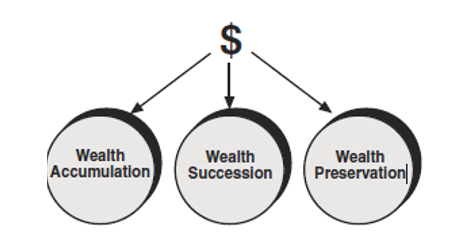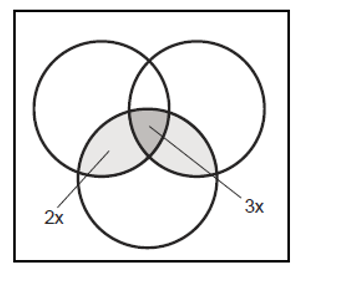Most people know me as a life insurance consultant and business advisor. But I’ve been in sales since the age of 7. Regardless of what you think about salespeople, the lessons I’ve learned about selling and problem solving have served me well throughout my career, not only as a financial advisor, but also as a volunteer and officer of not-for-profit organizations. I believe sales skills can help anyone, even if you’re an introvert by nature, don’t play golf and never thought of yourself as a natural salesperson or “closer.”
Let me explain.
After earning my MBA as a young man, my mother threw a fit when I told her I was going to sell insurance for a living. She supported me through four years of college and proudly watched work through graduate school to earn my masters. She wanted me to be an attorney, a banker or a corporate president—anything but a life insurance salesman. Even though we all know there’s an element of selling to every profession, for some reason my mom was totally opposed to her son being a professional salesman. This wasn’t her vision for me.
I guess mom thought bankers and service professionals were above selling, or that I would eventually grow tired of selling and find a “real” career. But the truth is, every successful professional has to sell their services and ideas to be successful.
Selling soap door-to-door at age 7 was scary. I had to knock on strangers’ doors and try to have adult conversations with them. Some weren’t very nice to me. But I refined my pitch and eventually got more comfortable starting a conversation, transitioning to why I was there, explaining the product I was offering and, finally, asking for the order. Eventually I sold enough soap to pay for YMCA camp and enjoyed the satisfaction of achieving a hard-earned goal.
In college, I sold shoes, sporting goods and appliances for a major department store. I loved talking to people and understanding what drove their buying decisions. Was it an essential need, or was it status or psychology at play? I loved trying to solve the puzzle. During the summer of my junior year of college, I sold life insurance to fellow students. It was low-cost policy with high amounts of guaranteed insurability that could be exercised at future events or ages with no evidence of insurability. It was a great concept, and I sold many policies.
Many believe that if you can sell life insurance successfully, you can sell anything because insurance is an intangible, unselfish purchase. It needs to be sold because it’s not willingly bought. Selling insurance taught me how to identify complex problems, explain complex solutions, build relationships and understand how emotion, fear, greed and love motivate people to action.
Whether discussing investments, trusts, exit planning strategies or wealth protection (including insurance) the advisor’s role is to be a listener and facilitator. It’s about helping clients determine what’s most important to them, finding where they want to improve, helping them make decisions they’re avoiding and addressing their fears. Only then can you recommend a product or service that might benefit them and relieve anxiety.
Three Circles of Wealth
Your first big “sale” with a new prospect isn’t a product or service; it’s the right to continue a dialogue with them and their other advisors. Most successful people want to run important financial decisions past their most trusted advisors, especially their attorney and CPA.
I devised “The Three Circles of Wealth” (see below) to be a simple visual tool to enhance the factfinding and discovery process with the prospective client and their advisors. If you don’t go through a disciplined fact-finding and discovery process first, you won’t be in a position to recommend solutions – or even know if the prospective client is a good fit for you. But, if you do, then you can begin a dialogue like this:
“Mr. Smith, when we have worked with business owners like you, I have found they have three primary areas where they invest considerable money. I call these sectors, the Three Circles of Wealth:
- Wealth Accumulation;
- Wealth Succession; and
- Wealth Preservation.
We’ve found that business owners are often spending thousands of dollars in each of the circles in their attempt to solve problems and achieve their objectives.” (I then draw three circles side by side but not touching.) Let’s see how this has played out for you.”

Now you can continue as follows: “Once I understand your goals and what you’ve already put into place, we can evaluate whether there might be opportunities to double or triple the effectiveness of your money -- the money you already have working for you.”
Here you want to remind the prospective client that they don’t have to put more dollars into their money machine to make the Three Circles work for them.
- 1. The Wealth Accumulation Circle represents all of the tools used to build wealth using both company dollars and personal dollars. Pension plans, profit sharing, Internal Revenue Code Section401(k)s, thrift plans and nonqualified plans are all common tools used to convert taxable income into capital.
- 2. The Wealth Succession Circle represents all the common strategies used to pass ownership from one generation to another or from the family management team to a professional management team. These tools are buy/sell agreements, stock options, stock redemptions and cross purchase agreements. But these tools can also include compensation planning, bonus structures, sales compensation and fringe benefits.
- 3. The Wealth Preservation Circle refers to all the ways they can pass their assets from one generation to another at the lowest tax cost. These tools include charitable trusts, qualified terminable interest property trusts, grantor trusts, a marital deduction trust and solving liquidity concerns.
Inter-Relationship with the Advisors
Again, most successful people surround themselves with watchdogs whose job is to protect them from doing something impulsive. You’ll find some watchdogs very talented and competent. If so, you want to meet them and start developing a relationship with them. The Three Circles gives you an opportunity to communicate your value and to work as a facilitator to bring all the parties together and to eliminate the inefficiencies you’ve found in their planning for the client.
Other times you’ll find the prospective client doesn’t like their attorney or CPA much. Now you have a referral opportunity to your team of advisors. Prospects very rarely will say no to The Three Circles. It’s simple to grasp, and they suspect there are gaps and inefficiencies in the planning even if they can’t articulate them. With your help, now they can.
Now you can say: “Mr. Smith, this lack of coordination between the Circles creates an opportunity for us to work together by combining the three circles.” (Now I draw them like Olympic rings.)

“Notice how each circle overlaps the other ones. This represents the many opportunities to combine tools and solve common problems with the same dollars. You’ve already made the decision to invest substantial dollars in your planning solutions. May I show you how to get double or triple duty from your existing dollars?”
At this point, either the prospect is going to agree to let you provide a second opinion of their current financial plan” or you may get further questions. Either way, you’re now positioned to move forward.
They’ll likely ask you how you get compensated before turning over personal details to you. You need to be transparent about how your fee structure works and how much it will likely cost the client to work with you.
A Win-Win
With this approach, there’s no risk to the prospect to find out about other options for their planning. If your diagnostic process is well established, providing a complimentary second opinion won’t require lots of time. And while the prospect is deciding about working with you, you’ll have plenty of data to decide if you want to work with them.
I call that a win-win-win -- the best of the three circles and your talents.
Dr. Guy Baker, CFP, CEPA, MBA is the founder of Wealth Teams Alliance (Irvine, Calif.). He is a member of the Forbes 250 Top Financial Security Professionals List and author of Maximize the RedZone, a guide for business owners as well as The Great Wealth Erosion, Manage Markets, Not Stocks and Investment Alchemy. He received the 2019 John Newton Russell Memorial Award for lifetime service achievement in the insurance





